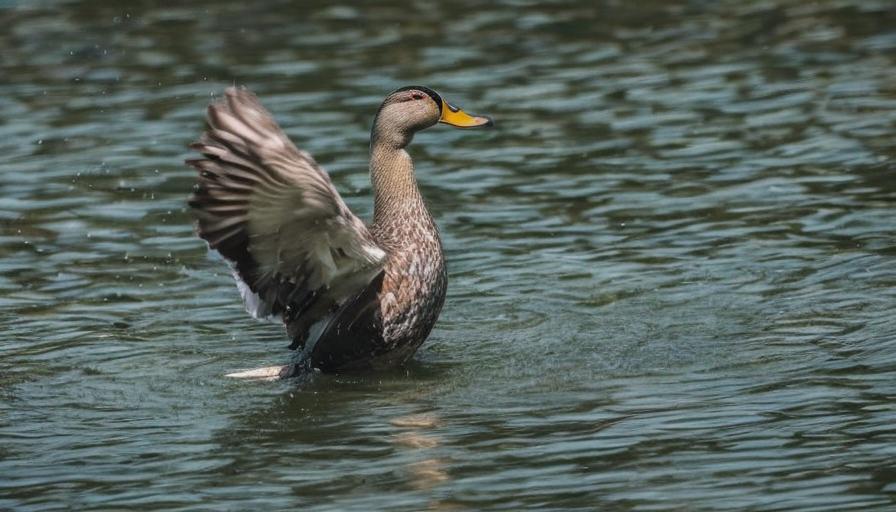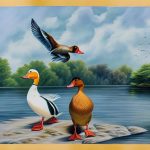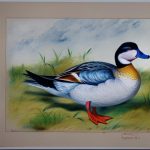Duck breeds come in a wide variety, each with its own unique characteristics and traits. Understanding these characteristics is important for anyone interested in raising ducks, whether for meat, eggs, or simply as pets. Some breeds are known for their excellent egg-laying abilities, while others are prized for their meat production. Additionally, certain breeds are better suited for life on the water, making them ideal for those with ponds or lakes on their property. Understanding the different characteristics of duck breeds can help individuals make informed decisions about which breed is best suited to their specific needs and environment.
Furthermore, different duck breeds have varying temperaments and personalities. Some breeds are known for being more docile and friendly, making them great for families with children or those looking for a pet duck. On the other hand, some breeds are more independent and less social, making them better suited for those looking for ducks primarily for their meat or eggs. Understanding the behavioral characteristics of different duck breeds can help individuals choose the right breed for their specific goals and lifestyle. Additionally, knowing the characteristics of different duck breeds can also help in breeding programs to maintain and improve the desirable traits of each breed.
Key Takeaways
- Duck breeds vary in size, color, and purpose, with some being better suited for egg production and others for meat.
- Physical features such as bill shape, body size, and feather color can help identify different duck breeds.
- Behavioral traits like foraging habits, temperament, and broodiness can vary among duck breeds.
- Domestic duck breeds are typically raised for agricultural purposes, while wild duck breeds are found in their natural habitats.
- Rare and endangered duck breeds are at risk of extinction and require conservation efforts to preserve their genetic diversity.
- Preserving duck breeds is important for maintaining biodiversity, cultural heritage, and sustainable agriculture.
- There are various resources available for learning more about duck breeds, including books, websites, and organizations dedicated to waterfowl conservation.
Identifying Physical Features of Different Duck Breeds
One of the most fascinating aspects of duck breeds is the wide range of physical features they exhibit. From the distinctive coloring of their feathers to the shape and size of their bills, each breed has its own unique physical characteristics. For example, the Pekin duck is known for its pure white feathers and bright orange bill, while the Indian Runner duck is recognized for its upright posture and distinctive long, slender body. By learning to identify these physical features, individuals can easily distinguish between different duck breeds and appreciate the diversity within the duck population.
In addition to their feathers and bills, duck breeds also vary in size and shape. Some breeds are larger and more robust, while others are smaller and more delicate. Understanding these physical differences can be important for those looking to raise ducks for meat production, as certain breeds are better suited for this purpose. Furthermore, being able to identify the physical features of different duck breeds can also be helpful in breeding programs to maintain breed standards and avoid crossbreeding.
Recognizing Behavioral Traits of Various Duck Breeds
Behavioral traits play a significant role in distinguishing between different duck breeds. Some breeds are known for their calm and friendly demeanor, making them ideal for those looking for pet ducks or wanting to raise ducks around children. Other breeds are more independent and less social, making them better suited for those looking to raise ducks primarily for meat or egg production. Understanding these behavioral traits can help individuals choose the right breed for their specific goals and lifestyle.
Furthermore, some duck breeds are more active and energetic, while others are more laid-back and relaxed. This can be an important consideration for those with limited space or looking to raise ducks in a specific environment. Additionally, understanding the behavioral traits of different duck breeds can also help in managing and caring for ducks, as certain breeds may have specific needs or require different handling techniques.
Differentiating Domestic and Wild Duck Breeds
Distinguishing between domestic and wild duck breeds is essential for anyone interested in ducks, whether for conservation efforts or raising them on a farm. Domestic duck breeds have been selectively bred over generations for specific traits such as egg production, meat quality, or ornamental purposes. These breeds are typically more docile and have adapted to living in captivity. On the other hand, wild duck breeds are those that exist in their natural habitat and have not been domesticated by humans.
Wild duck breeds exhibit behaviors and characteristics that are essential for survival in the wild, such as strong flying abilities, camouflage coloring, and keen instincts. Understanding the differences between domestic and wild duck breeds is crucial for conservation efforts to protect wild populations and preserve genetic diversity. Additionally, it is important for those raising ducks to be aware of the potential impact of domestic ducks on wild populations through interbreeding or disease transmission.
Identifying Rare and Endangered Duck Breeds
There are several rare and endangered duck breeds that are at risk of extinction due to factors such as habitat loss, predation, and competition from invasive species. Identifying these rare breeds is crucial for conservation efforts to protect genetic diversity and preserve these unique ducks for future generations. Some rare duck breeds include the East Indies duck, Cayuga duck, and Silver Appleyard duck, among others.
Recognizing these rare and endangered duck breeds can help raise awareness about their conservation status and encourage efforts to protect and preserve them. Additionally, identifying rare duck breeds can also be important for those interested in raising ducks, as they may choose to support conservation by raising rare breeds on their own farms or properties. By understanding the importance of these rare and endangered duck breeds, individuals can contribute to their conservation through education, advocacy, and breeding programs.
Recognizing the Importance of Preserving Duck Breeds

Preserving duck breeds is essential for maintaining genetic diversity within the duck population and ensuring the survival of unique traits and characteristics. Each duck breed has its own set of valuable traits that have been developed over generations through selective breeding. By recognizing the importance of preserving these breeds, individuals can contribute to efforts to protect genetic diversity and maintain the resilience of duck populations.
Furthermore, preserving duck breeds is important for sustainable agriculture and food security. Different duck breeds have been bred for specific purposes such as egg production, meat quality, or pest control. By preserving these breeds, we can ensure that future generations have access to a diverse range of ducks that can meet various agricultural needs. Additionally, preserving rare and endangered duck breeds is crucial for protecting cultural heritage and traditional farming practices that have been passed down through generations.
Resources for Learning More About Duck Breeds
For those interested in learning more about duck breeds, there are several resources available that provide valuable information on different breeds, their characteristics, and their conservation status. Books on poultry farming and waterfowl management often include detailed descriptions of various duck breeds, along with practical advice on raising ducks and maintaining breed standards. Additionally, online forums and communities dedicated to poultry keeping can be valuable sources of information and support for those interested in learning about different duck breeds.
Furthermore, organizations such as the American Poultry Association and The Livestock Conservancy provide resources on rare and heritage duck breeds, including breed profiles, conservation programs, and breeding guidelines. These organizations also offer opportunities to connect with breeders and enthusiasts who are passionate about preserving diverse duck populations. By utilizing these resources, individuals can gain a deeper understanding of duck breeds and contribute to efforts to protect and preserve these unique birds for future generations.
If you’re interested in identifying duck breeds, you may also want to check out this informative article on how long it takes for chicken eggs to hatch naturally. Understanding the hatching process can provide valuable insights into the breeding and care of poultry, including ducks.
FAQs
What are the different types of duck breeds?
There are many different types of duck breeds, including the Pekin, Mallard, Rouen, Khaki Campbell, and Muscovy, among others.
How can you identify different duck breeds?
Duck breeds can be identified by their physical characteristics, such as size, color, and feather patterns. Each breed also has unique traits and behaviors that can help with identification.
What are some common characteristics of duck breeds?
Common characteristics of duck breeds include size, color, feather patterns, bill shape, and leg color. Some breeds also have specific traits, such as the ability to fly or lay a large number of eggs.
Are there any resources available to help identify duck breeds?
Yes, there are many resources available to help identify duck breeds, including books, websites, and local poultry clubs. These resources often include detailed descriptions and photos of each breed.
Why is it important to identify duck breeds?
Identifying duck breeds is important for breeders, farmers, and enthusiasts who want to select the right ducks for their specific needs. It can also help with breeding programs and conservation efforts for rare or endangered breeds.
Meet Walter, the feathered-friend fanatic of Florida! Nestled in the sunshine state, Walter struts through life with his feathered companions, clucking his way to happiness. With a coop that’s fancier than a five-star hotel, he’s the Don Juan of the chicken world. When he’s not teaching his hens to do the cha-cha, you’ll find him in a heated debate with his prized rooster, Sir Clucks-a-Lot. Walter’s poultry passion is no yolk; he’s the sunny-side-up guy you never knew you needed in your flock of friends!







